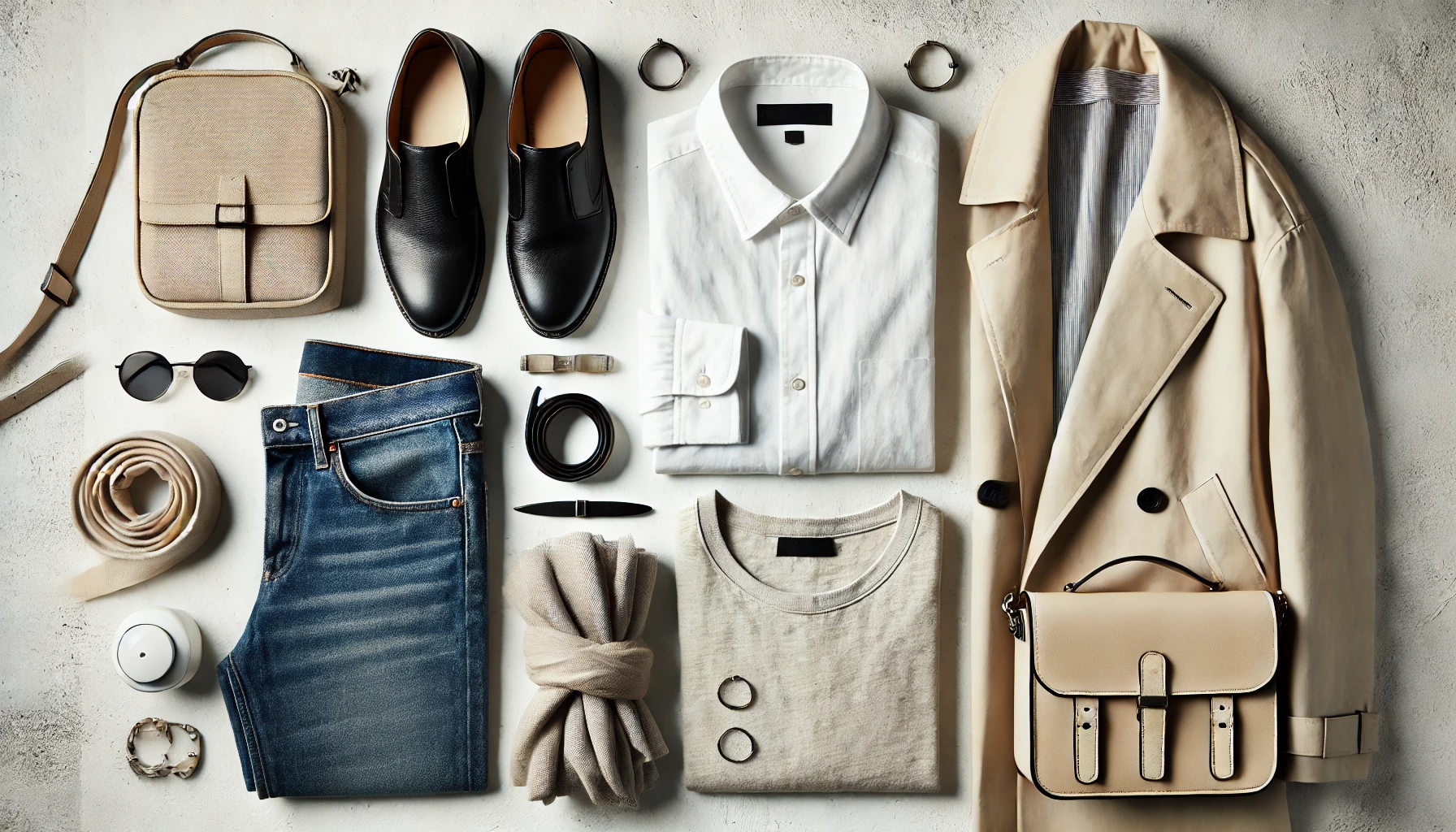In a world where fast fashion dominates, it’s easy to find ourselves with cluttered closets yet feeling like we have nothing to wear. A capsule wardrobe offers a solution: a thoughtfully curated collection of essential clothing pieces that work harmoniously together. This minimalist approach not only simplifies getting dressed but also promotes sustainability and reduces decision fatigue.
If you’re ready to reclaim your wardrobe, reduce stress, and save money, this guide will walk you through the steps to build your own capsule wardrobe. From understanding its purpose to practical tips for creating one, we’ve got you covered.
What Is a Capsule Wardrobe?
A capsule wardrobe is a small, versatile collection of timeless clothing items designed to mix and match effortlessly. Unlike a traditional wardrobe filled with trendy or rarely worn pieces, a capsule wardrobe emphasizes quality over quantity.
Key Characteristics of a Capsule Wardrobe:
- Minimalism: Typically includes 30-50 items, covering all seasons and occasions.
- Timelessness: Focuses on classic, enduring styles.
- Versatility: Each piece works well with others to maximize outfit options.
- Sustainability: Encourages mindful purchasing and reduces textile waste.
Why Build a Capsule Wardrobe?
- Saves Time: Less time spent deciding what to wear.
- Saves Money: Reduces impulse buying and investment in fast fashion.
- Eco-Friendly: Supports a sustainable lifestyle by reducing clothing waste.
- Reduces Stress: Eliminates decision fatigue and promotes confidence in your style.
How to Build Your Capsule Wardrobe
1. Evaluate Your Current Wardrobe
Before buying anything new, start by assessing what you already own. Follow these steps:
- Declutter: Remove clothing that doesn’t fit, is rarely worn, or no longer aligns with your style.
- Identify Favorites: Note items you wear often and feel good in.
- Spot Gaps: Determine missing essentials, such as a tailored blazer or classic white sneakers.
Pro Tip: Use the “KonMari method” by asking yourself if an item sparks joy.
2. Define Your Style
Understanding your personal style is key to building a capsule wardrobe that resonates with you. Consider the following:
- Lifestyle: Do you need formal attire for work, casual pieces for weekends, or activewear?
- Color Palette: Choose 2-3 base colors (e.g., black, navy, white) and 2-3 accent colors (e.g., blush, mustard, olive).
- Silhouettes and Fits: Identify which cuts and shapes flatter your body type and suit your preferences.
Example:
- Base Colors: Black, gray, white.
- Accent Colors: Burgundy, emerald green.
- Key Style Elements: Clean lines, tailored fits, and neutral tones for a polished look.
3. Choose Your Core Pieces
A capsule wardrobe typically includes the following categories:
Tops
- Neutral t-shirts (2-3)
- Button-down shirts (2-3)
- Lightweight sweater (1-2)
Bottoms
- Classic jeans (1-2 pairs)
- Tailored trousers (1-2 pairs)
- Versatile skirt (1)
Outerwear
- Blazer (1)
- Trench coat or wool coat (1)
- Lightweight jacket (1)
Dresses (Optional)
- Little black dress (1)
- Day-to-night dress (1)
Shoes
- Flats or loafers (1 pair)
- Sneakers (1 pair)
- Boots (1 pair)
Accessories
- Crossbody bag (1)
- Scarf (1)
- Minimalist jewelry (earrings, necklace)
4. Focus on Quality Over Quantity
Invest in high-quality clothing that lasts. Look for durable fabrics such as cotton, wool, and denim, and prioritize well-constructed garments.
How to Spot Quality Clothing:
- Check stitching for neatness.
- Opt for natural fibers over synthetics.
- Research brands with ethical practices and sustainable materials.
High-Authority Link: For a comprehensive guide to sustainable fashion brands, check out this resource on eco-friendly shopping.
5. Maximize Versatility with Layering
The key to a functional capsule wardrobe is layering. Learn to pair items in creative ways:
- Example 1: Style a white button-down shirt with jeans for casual wear or with tailored trousers for work.
- Example 2: Use a neutral blazer over a sweater for added warmth and sophistication.
- Example 3: Pair a scarf with different outfits to introduce color and texture.
6. Seasonal Adjustments
Capsule wardrobes aren’t one-size-fits-all; adapt your collection for different seasons:
- Spring/Summer: Include breathable fabrics like linen and lighter colors.
- Fall/Winter: Add layering pieces such as a wool coat, cashmere sweater, and boots.
Store off-season items to keep your wardrobe manageable and organized.
Real-Life Examples of Capsule Wardrobes
Example 1: The Busy Professional
- Base Colors: Navy, white, and beige.
- Pieces:
- Navy blazer.
- White silk blouse.
- Tailored trousers.
- Neutral flats.
Outfit Options: Mix and match these pieces for work meetings, casual Fridays, and after-hours events.
Example 2: The Minimalist Traveler
- Base Colors: Black, gray, and olive.
- Pieces:
- Comfortable jeans.
- Versatile black dress.
- Neutral sneakers.
Benefits: A compact wardrobe that fits into a carry-on while offering endless combinations.
Tips for Maintaining Your Capsule Wardrobe
- Regular Audits: Reassess every season to ensure your wardrobe aligns with your current lifestyle and style preferences.
- Mindful Shopping: Avoid impulse buys. Stick to your color palette and evaluate how new items fit within your collection.
- Care for Your Clothes: Follow proper washing and storage techniques to prolong the life of your garments.
Common Mistakes to Avoid
- Overcrowding: Including too many items defeats the purpose of simplicity.
- Ignoring Lifestyle Needs: Make sure your wardrobe matches your daily activities.
- Skipping Quality: Cheap, poorly made clothing will require frequent replacements.
Conclusion
Building a capsule wardrobe is more than a fashion choice—it’s a lifestyle shift toward simplicity, sustainability, and intentionality. By curating a collection of versatile, high-quality pieces, you can save time, reduce stress, and feel confident in your style every day.
Ready to get started? Take the first step by decluttering your closet and defining your personal style. For more tips on sustainable fashion and minimalist living, explore this in-depth guide on ethical wardrobe practices.
